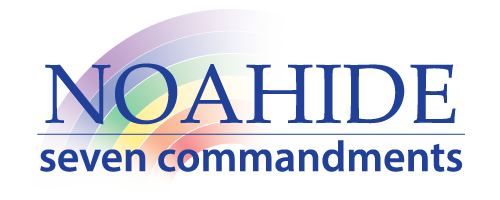Ó
Copy Right 2022
Rabbi Dr Zvi Aviner
IDOLATRY-18/
The IDOLATRY Commandment of Sinai
Now that we’ve studied the IDOLATRY Trial from Genesis Chapter One,
We are in a better position to understand
Moses’ Second of the Ten Commandments of Sinai.
As we’ve seen earlier in our class,
the top two Commandments of Sinai say:
Moses First of the Ten Commandments
- I Am (Essence)
- YHVH your ELKM (Attributes)
- Who took you out of Egypt (Kingship)
………………………………MAN…………………………………….
Moses’ Second of the Ten Commandments
- Thou shall not have (even on your mind)
- Other ELKM (Multiple gods, Family of G-d, Partners of G-d)
- Over My Face (G-d’s councilors, inferior forces)
- Thou shall not make for yourself a carved image
- Nor any likeness of that which is in the Heavens above or in the Earth bellow
- Thou shall not bow to them
- Thou shall not serve them
We’re in a better position now to comprehend
Moses’ First and Second Commandments,
which lists all the possible idol worshippingin the world,
How? Let’s analyze them one by one.
(By this, we follow the RaMBaM)
Moses’ First of the Ten Commandments
Top of Form
Bottom of Form
Developed by
- I Am
Those who deny the ‘Essence’ and the existence
of the Speaker, the G-d of Israel, are idol worshippers.
- YHVH your ELKM (Attributes)
Those who deny the existence of the Attributes,
Or who prefer One Attribute over the other,
Like preferring MERCY over JUDGMENT,
are guilty of a sort of IDOLATRY,
as it happened in Noah’s generation
and as it is happening in our generation.
- Who took you out of Egypt
Those who deny the intervention of G-d
In the world’s affairs and in human history,
are denying the KINGSHIP of God,
which is a sort of IDOLALTRY.
Moses’ Second of the Ten Commandments
- Thou shall not have (even on your mind)
This refers to idols of all kinds, that people might have
on their mind, even without making any form or image of it
in the real world.
- Other ELKM (Multiple gods, Family of G-d, Partners of G-d)
This prohibition pertains to “other deities” that people may worship
as ‘G-d’s Family members, Partners, inferior or superiors.
It covers all the idols in nature as we’ve discussed, such as:
Idols of the Six Days – From the Sixth Day to the First,
covering all ancient cultures and their deities.
Idol related to the Beginning – Wisdom and Science,
by which ELKM created the Heavens and the Earth
Idols related to the Spirit of ELKM – Art, Music, Poetry,
Idols related to our self – Man worshipping himself
Idols such as string Drives – Procreation and Wielding Power.
- Over My Face (G-d’s councilors, inferior forces)
There are idols though to ‘hide’ the True G-d,
Yet they have a power of their own.
Example: Enosh’s teaching of the importance of the
Moon and the Sun as G-d’s Councilors, to whom we
should doffer our petitions and prayers.
- Thou shall not make for yourself a carved image
This prohibition pertains to the stage when humanity
began carving images of wood and stone, as representatives
of the True G-d as well as of the false deities.
- Nor any likeness of that which is in the Heavens above
or in the Earth bellow
While the idols in line 4 relate to imaginary forms if anything in nature,
This prohibition relates to more precise form of these idols.
6: Thou shall not bow to them
This prohibition focusses on the acceptance of the idols
As our Kings, believing they intervene in nature as well as
In human history.
7: Nor shall you serve them
Specifically, this prohibition pertains to using
anything we do while serving G-d, to serve the idols.
Example: chanting David’s Psalms to glorify idols.
THUS, WE SEE THAT MOSES’ FIRST AND SECOND COMMNDMENTS
COVER THE ENTIRE JOUNEY OF IDOLATRTY IN THE WORLD
SINCE ENOSH’S TIME T OUR OWN GENERATION.
